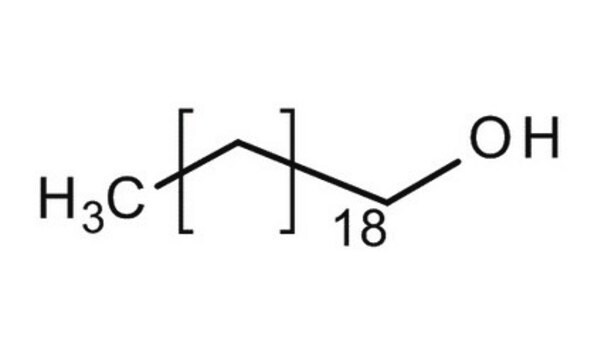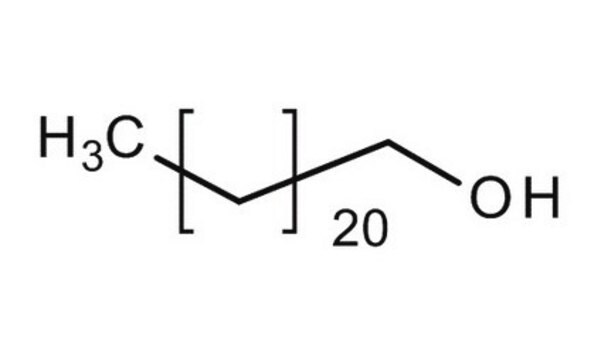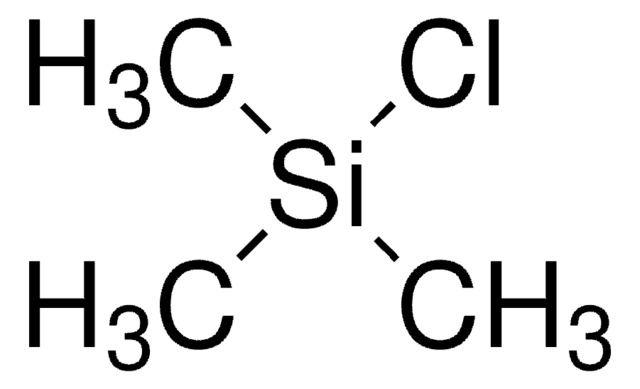234494
1-Eicosanol
98%
Synonyme(s) :
Arachinyl alcohol
About This Item
Produits recommandés
Densité de vapeur
7.4 (vs air)
Niveau de qualité
Pression de vapeur
<0.1 mmHg ( 20 °C)
Pureté
98%
Pf
62-65 °C (lit.)
Solubilité
water: slightly soluble 0.001 g/L at 23 °C
Chaîne SMILES
CCCCCCCCCCCCCCCCCCCCO
InChI
1S/C20H42O/c1-2-3-4-5-6-7-8-9-10-11-12-13-14-15-16-17-18-19-20-21/h21H,2-20H2,1H3
Clé InChI
BTFJIXJJCSYFAL-UHFFFAOYSA-N
Vous recherchez des produits similaires ? Visite Guide de comparaison des produits
Description générale
Application
- in gradient HPLC-charged aerosol detection method for the detection of different lipids
- as internal standard during determination of policosanol′s high molecular weight alcohols (policosanol′s fatty alcohols) in fish oil by GC
Code de la classe de stockage
11 - Combustible Solids
Classe de danger pour l'eau (WGK)
nwg
Point d'éclair (°F)
381.2 °F - open cup
Point d'éclair (°C)
194 °C - open cup
Équipement de protection individuelle
Eyeshields, Gloves, type N95 (US)
Faites votre choix parmi les versions les plus récentes :
Déjà en possession de ce produit ?
Retrouvez la documentation relative aux produits que vous avez récemment achetés dans la Bibliothèque de documents.
Les clients ont également consulté
Notre équipe de scientifiques dispose d'une expérience dans tous les secteurs de la recherche, notamment en sciences de la vie, science des matériaux, synthèse chimique, chromatographie, analyse et dans de nombreux autres domaines..
Contacter notre Service technique














